– Welcome everybody to Wednesday Nite @ the Lab. I’m Tom Zinnen, I work here at the UW-Madison Biotechnology Center. I also work for the Division of Extension and Wisconsin 4-H, and on behalf of those folks and our other co-organizers, the Wisconsin Public Television folks, now known as PBS Wisconsin, the Wisconsin Alumni Association, and the UW-Madison Science Alliance, thanks again for coming to Wednesday Nite @ the Lab. We do this every Wednesday night, 50 times a year. Tonight, it’s my pleasure to introduce to you Julia Noordyk. She’s with the UW Sea Grant Institute here at UW-Madison, and she’s stationed at UW-Green Bay. She was born in Bartlesville, Oklahoma, and then went to high school at Summit High School, near Breckenridge, Colorado in Summit County. I bet she knows how to ski. She went to Colorado State University in Fort Collins, and got an undergraduate degree in zoology, and then she came to UW-Madison to get her master’s degree in conservation biology and sustainable development. She was telling me that her master’s research was done on modeling a wetland in the south of France.
Otherwise known as the Camargue. There are wetlands in the south of Wisconsin. You chose well. Way to go. 2013 she joined UW Sea Grant and has been stationed at UW-Green Bay at the Biodiversity Center there. This is a very interesting collaboration between UW-Madison and UW-Green Bay. Tonight, she’s going to talk to us about something that’s pretty important to the history and future of Wisconsin, and that is “The Water Quality of Green Bay: “Past, Present, and Future. ” Would you please join me in welcoming Julia Noordyk to Wednesday Nite @ the Lab. [audience applauding]
– Well, thank you so much. That was probably the nicest introduction I’ve ever had in my life, so I appreciate that.
Yeah, so I work for the University of Wisconsin’s Sea Grant Institute, and you might be wondering particularly what does Sea Grant doing in Wisconsin? [all laughing] Well, Sea Grant is a NOAA, the National Oceanic and Atmospheric Administration, or the weather people, a NOAA university partnership, and we make up a national network in our coastal states, and the Great Lakes make up part of our nation’s coastline. And so NOAA partners with the university to fund research, outreach, and education on sustaining our Great Lakes resources. So we also have as part of my job, I’m the water quality outreach specialist. So we used to be called fish grant for a long time, you can kind of think of us as your county extension agent in hip boots, basically. But I focus on water quality. My colleagues, we have different specialties. We do have a fisheries specialist, social science, coastal engineering, and even climate and tourism up north in Superior. Okay. So let’s get talking about the bay of Green Bay. So just to raise the hands, is anybody from the Green Bay area? Okay, a few people, great.
Well, I think the first thing to notice here, is that it’s actually observable from space. So it is large. It’s been coined the largest freshwater estuary in the world; I like to say freshtuary. But it goes north to south 119 miles long, at its widest part 23 miles wide. It’s relatively shallow, averaging 15 to 20 feet in depth, and then, but at its maximum, 150 feet. And it really, why we know it as it is an estuary, is because the Fox River actually empties into it, which is pretty unique in this part of the world in terms of it’s one of the rivers that flows from south to north, entering into the southern part of the bay of Green Bay, and an estuary is the mixing of different waters from the coast or from the lakes and the rivers to the coasts, and so we see a strong biological component and gradient kind of going from that south to north end. So this is the basin of the watershed of Green Bay. It’s over 16,000 square miles. It has six major rivers, and it provides Lake Michigan with approximately 25% of its water. So this is a really significant part of our Great Lakes and Lake Michigan in our system, and a wonderful resource.
So this is the Fox-Wolf watershed. This is the largest watershed that drains into the bay of Green Bay; itself is over 6,600 square miles, and you can see that it starts way up in the northern part of Wisconsin, and the Wolf River drains towards Lake Winnebago, the Upper Fox to Lake Winnebago, and then eventually down the Lower Fox River. So this is, you can see a lot of Wisconsin, a third of the water in Wisconsin is going into the bay of Green Bay. So where I like to start really about the history of the past with the bay of Green Bay and that region in general, is some of who lived there originally, our First Nations. So it was the Winnebago Ho-Chunk, they had been there for thousands and thousands of years, and it wasn’t, and they spoke, it was a Sioux-speaking tribe. They extended down to Lake Winnebago all the way to Illinois, the Rock River in Illinois, and the Wisconsin River area. They traditionally, they hunted, they grew corn and tobacco, they fished and hunted. Fishing was incredibly important to First Nation tribes. This is depicting, they were cooperative in their fishing, and they would go, this is a depiction of a Menominee, something you might see with the Menominee tribe. And they would go out at night.
They fished cooperatively with spears, and the lanterns attract the fish to the surface, and then they would spear them. This area was extremely rich in natural resources, and so this is an example also of the Wisconsin Copper Culture, and it’s some of the earliest evidence we have of metal being used in North America, and so this is also coming from that region of the state. So really rich resource. It wasn’t until the 1600s that the Europeans finally landed there. So this is really a unique part of Wisconsin’s history. The bay of Green Bay, specifically the Red Banks area, was the first place Europeans made contact with Wisconsin in general, and it was Samuel de Champlain which was the governor of New France and Quebec, and he sent out Jean Nicolet down to find, he had heard of the people of the sea, and so of course they were searching for the West, and looking for easiest routes to China for exchange of goods. And so they set out in 1634 and went through the St. Lawrence River and eventually made their way to the banks of Green Bay. So thinking he was going to be meeting people, he was going to be meeting people with Asia, he donned, this is a depiction of him landing on the Red Banks, in his ostentatious silken robes, and firing pistols coming abroad. And it kind of tells the tale about that time, and how potentially the future domination of European culture came upon into the First Nation area.
At that point, he was invited to dinner, and they started making relations with the Native peoples at that time, and it’s said that he was very, very impressed by the six score of beavers that were served, but it wasn’t to do with to eat them, it had to do with their pelts. And so began really one of the major attractions for Europeans to this area was the fur trade. And this, they really, they harvested mink, otter, and beaver pellets, and it became just a really key location for the fur trade. The French were eventually kind of kicked out by the British for a while, based– because they were dealing with the French and Indian War, and that was all over fur trading posts throughout North America. So fur trading peaked in 1834 approximately, when they basically had deforested a lot of the area, and overharvested, and this is really when land sales started in this area in 1936, or sorry, 1836. So it was at this time then we started seeing more European settlements. And about 1848 is when Wisconsin became a state, and land sales really took off. And then there was a lot of farming and agriculture. So this area was really rich in water, and the Fox Valley really provided a great place to do agriculture and forestry and logging, and the Fox River being a natural conduit to actually move the logs in place here. So it began an incredible expansion.
We have a really rich Belgian-American history there, of agriculture, they started with grains, but eventually moving towards dairies. Logging is really well-known in the Fox Valley. Today, it remains one of the highest densely industrialized site for papermaking and logging in the world, and this was a major resource and industrial center. Also, we had vast amount of natural resources, in terms of the fish and waterfowl hunting was incredible here, a really big resource here. I put this picture up, you can see that they were just collecting them by maybe the hundreds at this point. And really, this kind of took off as some of the natural resources to this region. This is a picture depicting actual some commercial fishing. Around this time at the turn of the 20th century, or I’m sorry, yes the turn of the 20th century. And then in the early 1900s, what we started seeing is the development of Bay Beach. So Bay Beach still is there today, what it started off was with, they wanted to do private cottages, and then they opened this beach, but they were having a really hard time attracting people.
The roads weren’t very good, and it was in the middle of a wetland, so there was a lot of mosquitoes. But eventually, someone else bought it and developed it more into a resort area, and then they would boat people on a 540-foot dock that extended into the water. They built one of the first shoot-the-chutes, like an early version of the log ride, where they’d haul up 12 people and slide ’em down into the bay. They are also known for renting out bathing suits, at five cents or ten cents a day, and it’s said that on a good day they would gross up to $450, and they were never quite free of sand though, and always a little wet. [all laughing] Unfortunately at this time, we saw a massive industrialization happening, and the growth of the society there, and it really, this area really started going through some growing pains. The river was itself considered more of a place to put waste rather than a resource at that time, and it started to show. In the 1920s, a civic organization started to really raise concerns about the stench of the river, and then fish kills were happening, and then eventually, ice harvesting had to stop. It was in the 1920s that the first statewide pollution of our major rivers was done in Wisconsin, and they really discovered that we really had a really serious issue with low oxygen levels in the Fox River itself. But the major question was, what was causing the pollution? Was it our canneries? Was it our foundries? Was it the creameries? Was it the pulp and papermaking industry? It wasn’t until about the 1930s and ’40s that they tried to take measures. 1931, the Green Bay Metropolitan Sewerage District was formed.
So it wasn’t until then that they were actually treating a municipal waste coming off of what the Green Bay area was producing, it was all just going directly into the bay. I think pretty amazingly, it wasn’t until 1949 that the state of Wisconsin required the municipalities in the Fox Valley to actually have wastewater treatment plants. Imagine that. So a lot of waste went untreated for decades and decades in this area. And it was starting to show. By the 1930s, they had to start closing Bay Beach. They tried to close it in the mid 30s, but then people kept going. Eventually, the public health department in 1943 closed it permanently, people were complaining of getting sores, and there was dysentery, and there was just things that weren’t going very well there. So they did permanently close the beach. And it is still closed today.
But, for a future story. During the 1950s, we started seeing a lot more chemicals coming into the system, and so this is just an example of the discharge from a papermaking plant. So the pulp industry itself would, they were a basically industry, they had no, they didn’t have to treat anything, and they were allowed to discharge what they want. So when the pulp and all these chemicals go in, they were actually, when they were trying to decompose, it was eating up all the oxygen in the river, it was creating sulfite liquor, things that were really kind of not good for the river and the bay. What we see, is this is the Green Bay mayfly, or hexagenia. This is a really important food source for walleye and other fish in the bay. So they’re about, their wingspan is about 2 inches long, and so this is a picture of Lake Erie but it’s, you can see a mayfly hatch on the radar. So they would multiply by thousands, in a certain time of year, there would be thousands covering the Green Bay area, and a really important food source. They were said to, in the Green Bay area, to just basically cover the streets, and in the turn of the century, they would have a contest where kids would shovel them, as many as they could actually, for $5. They have a, they have written reports of trees and branches just bowing down at times, of them being so covered in mayflies.
So mayflies have a pretty interesting life history though. They spend most of their life buried in the sediments at the bottom of the river in the bay. For 2 years they are in this nymph stage, and they only come up and turn into the mayfly, they emerge from the water, and then they’re basically breeding machines, and they don’t even have feeding mouthparts. And so they come up, they breed on top, and then lay the eggs on top of the water, and then basically die off in one or two days. But because they spend most of their life on the bottom of the bay in the sediments, when there’s no oxygen, or there’s chemicals, we really started to see an impact on their populations, and so some of the early surveys, and think of this, this was like millions and millions of mayflies just being, having to sometimes be snowplowed off the streets of this region. In 1938, they started doing surveys, and you can see that until 1967, they rapidly dropped every year until basically they haven’t been around in the bay since then. We also start to see a really big impact on our commercial fisheries in the bay of Green Bay. Before 1965, the perch fishery, it was, they said they were approximately harvesting over a million pounds a year at that point. And this shows from 1936 to 1985, and we start to see really big declines. It was the water quality and habitat destruction, but it was also a combination of overharvesting at the same time too, and a lack of food source.
At this time, we saw the rising concerns about PCBs, polychlorinated biphenyls; these are organic chemicals used in the papermaking process. Commonly in the Fox Valley, they started being used in the recycling of carbonless copy paper for typewriters. They were used from 1954 to 1971, when they became banned. However, they’re really persistent, and these chemicals stick to the bottom of the sediments, at the bottom of the river in the bay, and then they really have a lot of human health impacts, and then also our ecological impacts. So they started looking at the bird, researchers were starting to see really big impacts to the bird populations there. This is a double-crested cormorant with a crossbill, so you can see that this was a genital malformation. They also were seeing Forster’s terns having less reproductive success. So as these fish-eating birds were eating the fish below them, those fish were eating the little algae and zooplankton below them, and then those were absorbing all the PCBs from the bottom of the sediment. These chemicals are working their way up the food chain, and getting concentrated in these fish-eating birds, and really having an impact on their populations. So it wasn’t until 1972, when the Clean Water Act happened, started coming around to really help.
Does anybody know what senator this is? [audience murmuring] Yes, U. S. Senator Edmund Muskie of Maine. So during his 22-year in Congress, he was really instrumental in a lot of the environmental protection legislation that came about, but the Clean Water Act and then the Clean Air Act in 1972. The Clean Water Act really had a profound effect on water quality moving forward in our country. This was the same time the Cuyahoga River in Ohio was setting on fire. We were seeing, you know, Silent Spring and the effects of DDT, and we knew that we really had some serious issues. And this was the first piece of environmental protection that really required limits on the discharge coming from industrial sources, and then our wastewater treatment plants, and what they could put into our rivers and lakes and our water bodies. It was also at this time, in 1972 that the Great Lakes Water Quality Agreement was made. And this is a bi-national agreement between Canada and the United States to restore and protect the Great Lakes.
So this was a critical piece in the U. S., the EPA, the Environmental Protection Agency administers this program, and they started looking around the Great Lakes and seeing where to start. So they identified 43 different areas in the Great Lakes called “areas of concern. ” These are basically polluted hotspots, places where they have concentrations of PCBs or other types of persistent organic chemicals. Maybe there’s eutrophication issues, or there’s a lot of habitat degradation. And so unfortunately, the lower Green Bay and the Fox River were identified as one of those pollution hotspots. And so this is what are in our area signifies the actual designation of our area, and the Wisconsin Department of Natural Resources is tasked with actually coming up with, helping come up with a plan to restore it. And this, so the first plan to help take take action and restore the lower, the health of the Lower Fox River and the bay of Green Bay started in 1987, and out of those 43 areas of concern across the Great Lakes, Green Bay was the first one to come up with a plan. People were ready for change.
We have a very dedicated citizen and researcher group, they’re dedicated to this. Some of their priority actions were: stop industrial toxic waste from happening and going into the river and the bay. Others were to actually get out what was already there. So let’s, we really need to remove and dredge the sediments of these PCBs and all these other things from the bottom and get them out of the system. Also, we have a big nutrient problem, so we we wanted to reduce phosphorus inputs that were causing major algae blooms in the bay of Green Bay. And then also, one of my favorites of course, as an outreach specialist, they really wanted to bring more public awareness and participation in restoring the health of the bay itself, with the Clean Bay Backers. That’s Stanley Sturgeon up there. We have Marsha Frog. [laughing] Finnegan, something Finnegan. Okay, so moving into the 21st century, what are we seeing? So this is a picture looking north, at the very south end of the bay.
This is Renard Island, which was a dredge fill site, and then I think that’s the Zippin Pippin, I heard somebody talking about that earlier. So that’s Bay Beach as it is today. So what’s going on? So we have, the PCB cleanup is happening, which is really exciting. This was decades of lawsuits moving forward to say who’s responsible, who’s gonna clean up, how much is it gonna cost. On this, is the PCB clean up spans 39 miles, starting from Little Lake Buttes Des Morts all the way to the mouth of the Fox River. The dredging process itself is actually dredging about 13 miles of the river, and it’s the largest PCB cleanup in the United States at this point. So it’s a pretty impressive system. What you’re looking at here is a hydraulic dredge, what they basically have is a pipe that goes down to the bottom and sucks up the sediment, and then takes it to a processing facility, like a big vacuum, where they actually process it to take out the sediments and clean the sediments and de-water them. So this is, so when it gets to the plant, it is separated into different types of sediment. So this is what you’re seeing is sand, and so PCBs don’t really stick to sand very well, they’re too coarse.
And so this sand is actually clean, and so it’s going to be, it was beneficially reused in projects locally, like under highway 41. The stuff that is contaminated however, is de-watered, it’s squeezed together, all the water out of it, and then it’s trucked to a landfill, or if it’s very highly contaminated, it’s trucked to a toxic waste site. And so today, we have approximately 150,000 truck loads of sediment that have gone. It operates when in season, they’re dredging 24 hours a day, five to six days a week during the season. That’s like 3. 3 million tons of sediment. That’s about, according to some of my colleague’s calculations, Lambeau Field seven times over of sediment coming out of the Fox River, being processed, and getting those contaminants out. So it’s a really impressive project, and what’s the most exciting part is, it’s starting to work. So they did some monitoring after they did the first dredging project at Little Lake Buttes des Morts, and what we’re looking at here is the total PCB concentration in the sediments. And you can see that it’s quite high, and just after one year after they did the dredging, we have a 94% reduction in PCBs in the sediments found, and what I like the most too, is we’ve had fish consumption advisories for PCBs in eating fish in the Fox River for decades now, and we’re starting to see declines in PCBs in our fish, particularly walleye.
So in this graph is showing basically, that line would be natural recovery, and we can see that there is, just after a year, 73% reduction in PCB concentrations just in walleye alone. So this is about 10 years ago this was done, we have, they’ve been monitoring since, and we’re still seeing incredible results for most of the fish, are anywhere from 70 to over 90% reductions in PCBs. So this is a really good news story, and potentially for what can come. Now, the bay of Green Bay has historically been an incredibly lush, emergent wetland area. Really rich in biological diversity, and a place for fish to breed or to spawn, and then to feed and a nursery area. So this is a picture of some of the islands that were traditionally in the lower bay. This is the Cat Island Chain. So this is a 1966 picture, so just keep this in mind, I’ll go back and forth here. During the 19th– so we had some development on the shoreline that made the wave energy higher, and then we had a really intense storm in 1976, in the spring, and it basically wiped out, wiped out these islands that were providing a lot of island habitat. They were also acting, these islands have been acting like a barrier to behind, so this emergent wetland, an emergent wetland behind it also from the wave action in the bay of Green Bay.
So this was a big loss. So over 20 years period, there was planning that we knew that the bay would benefit from having these islands potentially restored, and this is what it looked like in 2012. There was literally just Cat Island left. Just a really remnant of those past islands all together. Now, the Brown County port, and the U. S. Army Corps, along with the U. S. Fish and Wildlife, the Wisconsin Department of Natural Resources, and Sea Grant, they worked for 20 years to make a plan that would actually restore these islands and beneficially use dredged material from the shipping channel, saving a lot of money. So the shipping channel has to be dredged every year to a certain depth for shipping to go through, and typically, all that dredge material has to be taken to land and then shipped to a landfill.
Very costly endeavor. However, instead of doing that, we’re beneficially using this clean dredge sediment from the outer bay in the shipping channel, and we’re going to recreate these islands. So this barrier was created, it’s two and a half miles long, it goes into the bay, and you can see these cells kind of, with these long fingers coming down. And so there’s three islands going to be created, and over 20 to 30 years, the dredged material will be placed in each of these cells. So this is the first year that dredged material was placed, and it turned out to be this beautiful sandy area, and you can see these cells will be filled up. So this is a really big win-win for the environment and the economy, saving taxpayer dollars through beneficially reusing this dredge sediment, and it’s starting to provide this incredible island habitat. It’s going to eventually provide over 242 acres of island habitat, which is critical for shoreline birds. We’re already seeing over 35 shoreline birds have been seen there, and over 200 species of birds are starting to come back to the Cat Islands. Really important area for these emergent wetlands, so it’s going to restore, create that wave barrier again, and help that emergent wetland behind it come back. And so we have these northern pintails, so waterfowls, again, a huge attractant to the bay of Green Bay.
We have these iconic, beautiful snowy owls that have been visiting the Cat Island Chain, and then also we have an endangered species that hasn’t been in the Green Bay area, the piping plover, for over 70 years, and now we’ve had successful nesting breeding pairs for several years in a row. So this is really exciting in terms of, it’s actually working very quickly, and it shows, really shows you if you give it a chance, and you bring it back, they will come. The current commercial fishery in the bay of Green Bay is still extremely important to Wisconsin. The commercial fishery in the bay, we still have a small yellow perch, but it’s pretty local at this point. More so, we are seeing lake whitefish is a really important commercial fishery just in the bay of Green Bay itself, and so you can see that pounds harvested between 2011 and 2015, the vast majority is lake whitefish, and maybe a very small percentage of yellow perch, really just for local sources. So, and actually I’ll– if you’re wondering what a lake whitefish looks like, this is. It’s also a very popular recreational ice fish, ice fishing fish, and this is a very happy father-in-law catching a large white fish through the ice on the bay of Green Bay. The bay of Green Bay is really productive, biologically speaking, and still really important to the commercial fishery of Wisconsin and Lake Michigan, and really makes up 30 to 50% of the commercial fishery for Lake Michigan as a whole. So that says something about that system. The mayfly.
So let’s talk about the mayfly again for a little bit. So we know that they were kind of, they went away, there wasn’t a lot of oxygen, there was a lot of toxins happening that maybe were preventing their populations, so there is a UW-Milwaukee researcher, Jerry Caster, who has actually been trying to reintroduce and restore the mayfly population, which is again a really important protein source for those walleye, and just part of the ecosystem, and so he’s had graduate students going to Lake Erie and the Mississippi River, collecting larvae of the mayfly, and bringing ’em back, and he’s planted over 400 million eggs in the bay of Green Bay. And so the thought is hopefully, if we can get through a population threshold, that actually they will be able to reproduce on their own. So there may be some who are more excited about this than others. [all laughing] From what I’ve heard, the fishermen yes. The fishermen verse the cottage owners. [all laughing] Okay, so what is really the gorilla in the room that we’re really dealing with on the bay of Green Bay in regards to water quality right today? Well, we have a very, very big issue with blue-green algae blooms in the bay, and my colleague who gave me this photo, he wanted everyone to know that the dog was moved immediately, so don’t worry about it too much. But blue-green algae, and what’s really happening here is what we say too, in the bay of Green Bay, is we have an algae bloom today, and a dead zone tomorrow. So the algae bloom, when it dies, it sinks to the bottom of the bay, and then as it decomposes, it sucks up oxygen. And we have so much of it happening, that it’s actually creating a dead zone in the bay of Green Bay, or hypoxia.
So areas in the bay that have so little oxygen, that it can’t support life. And we see this every summer, and depending on extended part of time in the summer to fall, and it is definitely a big ecological concern. So why are we having this, such a big issue? Well again, let’s talk about how large this drainage basin is that’s just going to the bottom of the bay. A 6,600 square miles of land. So this is a land cover map, and the green areas are really showing like forested areas, the yellow lighter areas are agriculture, and then those pink areas are dense urban areas. And we have a lot of land in this area that is agricultural land and urban. So what we see is some of our traditional agricultural practices in the last few decades, that we have these bare fields, and soil erosion is occurring, and unfortunately, all this soil when it rains or the snow melts, is ending up in the bay. It’s been said that and calculated that about approximately 24 dump trucks a day on average end up in the bay of Green Bay. And so this is a really big problem, because those farmers, they don’t want their soil in the bay and neither do we, so we want to really try to work on figuring out how we keep that soil on the ground. But it’s not just agriculture that also contributes phosphorus and pollution to the waterways; it’s definitely all of us.
As communities, all of our neighbors, so we traditionally, when it rains and snow melts again off our roofs, it’s going down our storm drain, and then eventually out to the street and down the storm drain. And you can see like this gutter is filled with leaves and sticks and all that things have nutrients in them themselves, and where do they end up? They eventually end up in our local water body, the river, stream, and the lake. In our region, we have a really high density of dairy industry in our region, and when there’s a lot of cows, there’s a lot of manure. And so one of, manure’s a natural fertilizer, but we have almost too many cows for the amount of land that we have, so we have really a lot of agricultural land that’s oversaturated in phosphorus and these nutrients from manure. And basically what happens, is we know that when we want to grow something in our garden, we put nutrients on it. Phosphorus and nitrogen fertilizer. And this is basically what’s happening in the bay of Green Bay. So we are overfertilizing it, and it’s causing these blue-green algae blooms. So blue-green algae is actually a cyanobacteria, so it’s actually not an algae, but it’s a photosynthetic bacteria. And when we have too many of these nutrients, it creates a large bloom that can be harmful.
When they decompose and die off, they actually release neural and liver toxins, and so this could be particularly bad for public health, and cause skin rashes or GI problems. It seems to be more of an issue for our pets, ’cause dogs just run in the water, and it’s really hard to tell even if the water is green, whether it’s actually has these cyanotoxins in it or not. The dead zone also has, and the nutrients have another effect, so this is kind of result of the dead zone in Green Bay. I got this e-mail, so they found a fish kill. So basically what had happened in this case, most of the time fish can swim away from a low oxygen area and aren’t too affected, but these guys got stuck kind of between the shoreline and the dead zone, and they had nowhere to go. So they just, they ended up on the shoreline, trying to escape the dead zone most likely. When we really do start to do the modeling, and figure out where our sources of phosphorus and nutrients are coming from, we can start to see some big trends. So for phosphorus, we know a lot of it is coming from cropland, but we do have still some large sources of industrial outputs, and our municipalities. So our roads, our leaves, leaf pickup, encourage you to not put your leaves in the gutter in Madison. And so, these are definitely some of the sources that we all need to work on.
The total suspended solids, or those sediments, soil erosion, most of it is coming from our agricultural lands. So we really need to think about how we can create healthy soils, and keep that soil on the ground and not in our waterways. So what does the future hold? Well, that’s hard to know. But one thing we do know, this is some of the information that we can talk about, it comes from the Wisconsin Initiative on Climate Change Impacts. This was a collaboration between the Wisconsin Department of Natural Resources and UW-Madison, and really was bringing together the science of how our climate is changing, specifically the impacts to Wisconsin. And we do know that we are getting warmer, we’ve seen observed trends, and we’re gonna continue to get warmer. So this is approximately the average by the mid-century that we will have projected in terms of the average temperature increase, 6. 5 degrees Fahrenheit, so this is the average just over the whole year. Well, we’re really going to be seeing, the warming is going to be the largest in the winter. In parts of– and so what does that mean? That means we’re gonna have more precipitation in the form of rain than snow in Wisconsin.
We’re also getting wetter. This is probably obvious to many people in the last couple years, but observed, we’ve seen parts of the state are getting a lot wetter, and this is the rainfall that’s over two inches per rainfall. So the average precipitation over the year may not be increasing, or it’s hard to predict what’s going to happen, but we’re seeing those large storm events happening. So we can say that in the future, we’re gonna have these large precipitation events. This was in 2015, these huge intense storms coming through through the Great Lakes, swept across Lake Michigan and did a lot of damage at Sleeping Bear Dunes, but what are these big storms, the warmer winters and the big storms mean in terms of water quality for the bay of Green Bay? Well, it means that we’re gonna have more runoff events. More of that soil erosion occurring. We see already that this is a large runoff event from 2011. We see that these large runoff events, 80% of all the sediment that’s going, all those 24 dump trucks a day, all that sediment is happening really in only a few days of the year, about 14 days of the year. So what does that mean? That’s when the snow is melting or we have these really large rain events that’s pushing it all into the bay and off the landscape. What’s going on up in our region? We’re doing some really great things.
Working with the agricultural community, there’s the Lower Fox Demonstration Network, Farms Demonstration Network, and what they’re doing is they’re working on conservation practices to create healthier soils and reduce soil erosion. So the healthier soils will be able to infiltrate the water more, and keep that soil on the land and not in our waterways, and then also reduce the amount of nutrients that need to be put on the land too for the farmers themselves. And some of the main conservation practices that are being focused on in the Lower Fox River are tilling and no tilling. So the demonstration farms, we have these volunteer farms that are putting these practices with technical assistance, and then they’re testing whether the traditional method is better in terms of water quality than the conservation practice, and so on the left hand here is a field that is traditionally tilled, so at the end of the season they till it up, you see this bare field, it’s called the clean field, and you can see how chocolate milk that is on the left hand side, whereas the no-till, where you don’t till and you just leave the crop residue on the field and then in the next year, you plant right into it, you can see how much clearer that water is coming out when they’re doing they’re monitoring. And so that crop residue is staying on the field and starting to build organic matter, and not just eroding all the soil into the waterways and the ditches. Another, cover crops are another way that they’re really trying to build healthier soil. So this is one of the local demonstration farms. This is just a test plot field that has over ten different cover crops. The man in the center there is holding a tillage radish, so you can see there’s a lot of diversity in the types of crops that he has here, but the tillage radish, you know, it is a huge, giant radish that goes in the ground, it’s left over winter, it decomposes, and then it creates like irrigation, basically as it decomposes and creates these large holes. So these really can actually provide more organic matter to the soil, and those long root systems start to build healthier soils that can hold more water, and then also catch more water and drain.
Another thing that farmers are really well known for in general is working on equipment and being innovative, and so we’re starting to see this. So they’re having to do some of these conservation practices, the equipment doesn’t exist. So they’re having to come up with ways to adapt their equipment to do these conservation practices, and what you’re looking at here is a manure injector. So a few slides ago, I showed you what a manure sprayer, which is kind of a traditional way, which is very nuisance to neighbors and the health of people spraying it, and not fun for anybody. But this actually injects the manure into the ground, so it’s not just sitting there on the top, ready to run off in case it rains or the snow melts the next day. And they, and these farmers are actually adapting their own equipment and coming up with new ways to try to mitigate the impact of nutrients. And then also we see some of the farmers actually changing from cash crops to going to grazing. So there’s a lot of farms that there’s a lot of benefits to switching to grazing, so we know these grasses have long root systems, they build healthier soils, it’s kind of a symbiotic relationship between the cows; they go around, they agitate the ground, they do their thing and they fertilize the grass, and these heifers are shown to be healthier for the cows themselves, is also giving more economic opportunities to some of the farmers who are switching these practices. One of the farmers that we talked to about this has really changed his perception, and he’s able to spend more time with his family. And then also just be more economically stable with these kind of practices.
And then really in our urban areas, we need to really start thinking about how we transform stormwater, which we think of as just get away from us and try to get it downriver, to actually more of a resource. So this is a stormwater pond, but it’s planted with native vegetation, it’s right along the Fox River, and we’re really starting to see this, you know, people starting to think about it more. And there’s a trail that goes around it too, so it’s not just a place to put stormwater, but it’s actually some becoming a community asset. Thinking about infiltrating into the ground, rather than running off down the gutter, is also green infrastructure, green stormwater infrastructure. These are engineered systems. Thinking about restoring our hydrological processes in our urban areas, so this is a permeable paver, and you can see the spaces in between the pavers, and the water when it rains, or the snow melts, it just goes down and infiltrates into the ground. This is an example of it just strategically placed around a small storm drain in our area. So it’s really catching all the runoff from the parking lot before it gets to the storm drain, and hopefully reducing the amount of water going into the storm drain along with the pollution. The restoration of the Cat Island Chain, again a very successful win-win project, that will continue to grow. It’s extremely successful, and it is providing a model potentially throughout the Great Lakes of how we could actually use, reuse beneficial materials, and again, over 212 species of birds seen, 35 shorebirds alone.
A really unique and cool project that’s also happening is a wild rice restoration project that they’re piloting in the bay of Green Bay. So wild rice has been a historically extremely important ecological resource for the bay, in terms of water quality benefits and providing a food source for the all that waterfowl. It’s also culturally significant for our First Nations, and they had been seeding wild rice in the bay for the last four or five years, so approximately every year, about 2,000 pounds of rice. This year, 40 acres along the bay were planted in wild rice, and this is a pilot, and we’re gonna see if we can actually get wild rice to reestablish and grow, and be that important, important ecological resource again for the region. Will we be shoveling mayflies again? I don’t know the answer to that. I kind of think that could be interesting. [laughing] But knowing that maybe we’ll see if our water quality can sustain mayflies again, and whether or not this project will be successful. The future of the Green Bay fishery. So we didn’t talk too much about it, but this is somewhat of an unknown also. The food web in Lake Michigan and the bay of Green Bay has changed dramatically over the last 20 years, due to an aquatic invasive species, the zebra and the quagga mussels.
So they’ve kind of taken over, and they’ve changed the whole food web of the Great Lakes, and particularly Lake Michigan, not quite Lake Superior, but Lake Michigan, and we are, it’s still unknown what the impacts are going to be up to our fish species. Some things are adapting and eating them, white fish have been eating them, but they’re skinnier white fish, these mussels don’t provide as much nutrition, and so we don’t, we’re still learning a lot about how our food webs in Lake Michigan have been changed due to these species. This is just an update. So they were projected to end the PCB dredging project this year; the winter weather kind of put it off just a little bit, but it has wrapped up, and so we’re seeing, you know, 15 years of a major operation, and decades of this legacy pollutant being taken out and what the future holds for that, that’s really exciting, you know, our fish consumption advisories are going down, and it’s just a really exciting time to be there, because this contaminant has really plagued this area for the last 30 years. Does anyone recognize this plant? This is also an invasive species called phragmites. Just as a side note, they’re trying to cultivate it in the south of France in the Camargue delta. [laughing] But here it’s not welcome. So this is actually the shoreline of Bay Beach in 2016, and you can see it’s not quite a beach, and this can cause big aesthetic issues for shorelines, but also, it’s not very good for biodiversity and our wildlife either. There have been restoration efforts to actually remove phragmites; this is actually the same location, and you can see there’s actually sand under it. So we know the beach has been closed since the 1940s, and now the city of Green Bay has embarked on this plan to actually restore Bay Beach back to a beach.
As part of this plan, they’re going to start construction on it, supposedly this spring. They’re going to put in this long, 500-foot boardwalk wildlife viewing platform. They intend to restore beach area, so people can come to the the bay of Green Bay and actually access the water. And then the Clean Bay Backers, we’re back. So I work with the Clean Bay Backers, and we’re a citizens advisory group, and we really work to advise the Wisconsin Department of Natural Resources from the citizens’ perspective on how to restore the health of the Lower Fox River and the Green Bay, and what we do is every year, we take our community leaders and our elected officials on experiential tour of the bay of Green Bay and the Lower Fox River, to really highlight the opportunities, our successes of restoration, some of things you hear, and then our ongoing challenges of restoring the Lower Fox River and the bay of Green Bay. And that’s all I have for you tonight. Thank you very much. I’m more than happy to take any questions you have. [audience applauding]
Search University Place Episodes
Related Stories from PBS Wisconsin's Blog

Donate to sign up. Activate and sign in to Passport. It's that easy to help PBS Wisconsin serve your community through media that educates, inspires, and entertains.
Make your membership gift today
Only for new users: Activate Passport using your code or email address
Already a member?
Look up my account
Need some help? Go to FAQ or visit PBS Passport Help
Need help accessing PBS Wisconsin anywhere?

Online Access | Platform & Device Access | Cable or Satellite Access | Over-The-Air Access
Visit Access Guide
Need help accessing PBS Wisconsin anywhere?

Visit Our
Live TV Access Guide
Online AccessPlatform & Device Access
Cable or Satellite Access
Over-The-Air Access
Visit Access Guide
 Passport
Passport

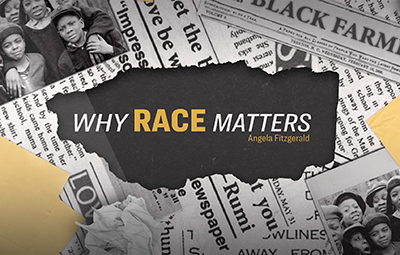
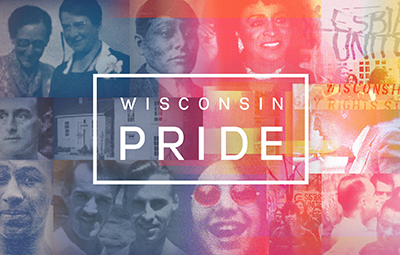




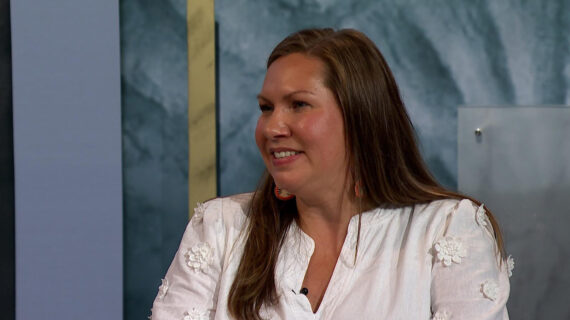
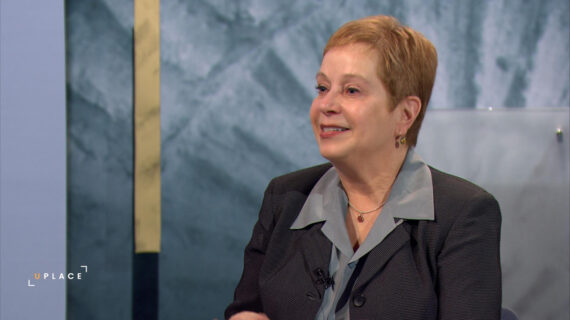
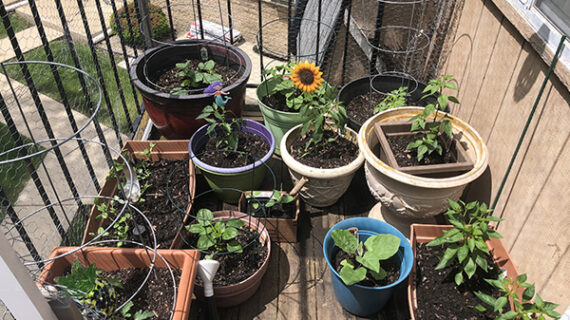
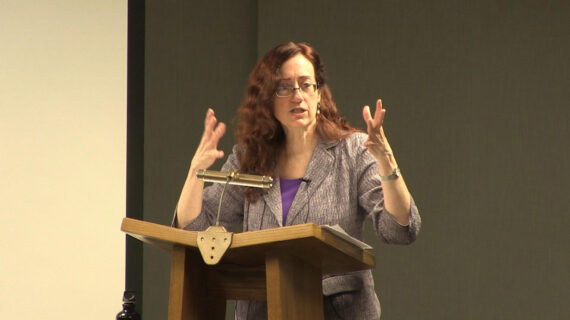
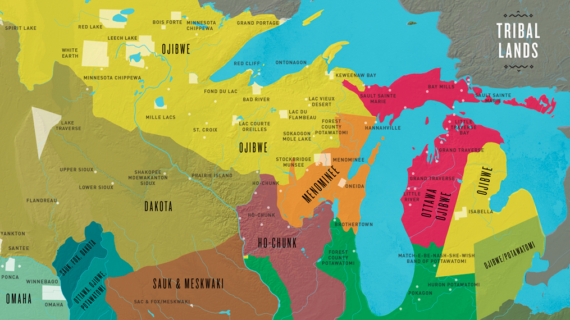
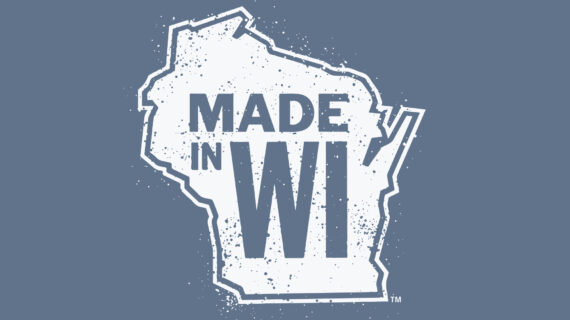
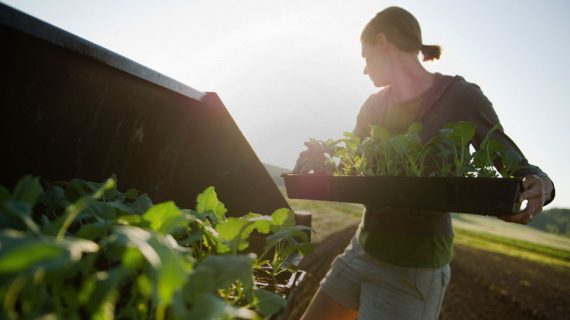
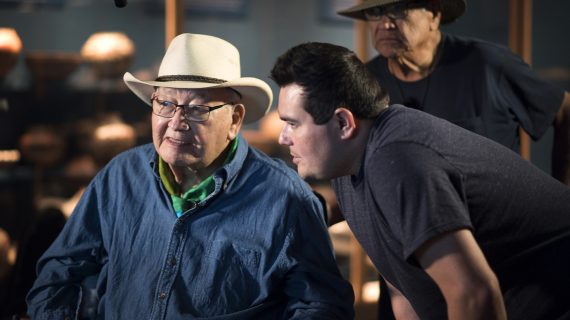

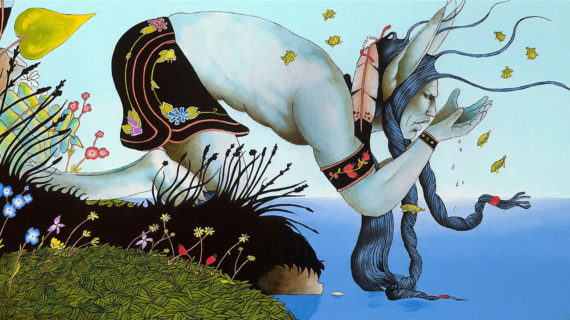

Follow Us